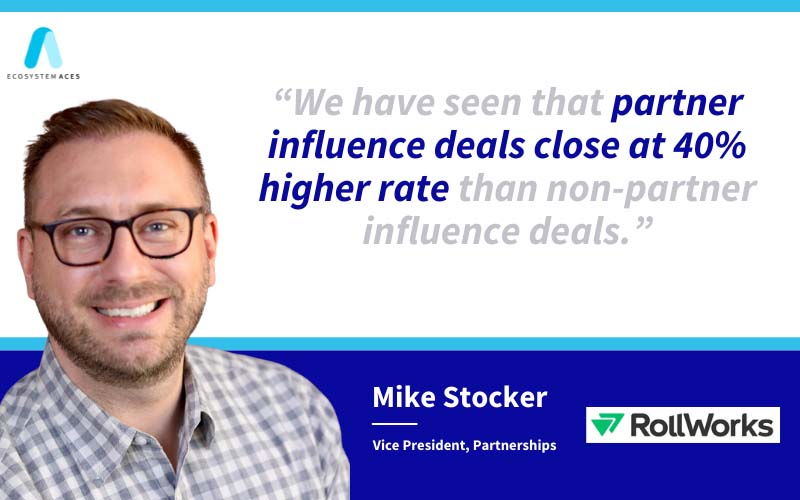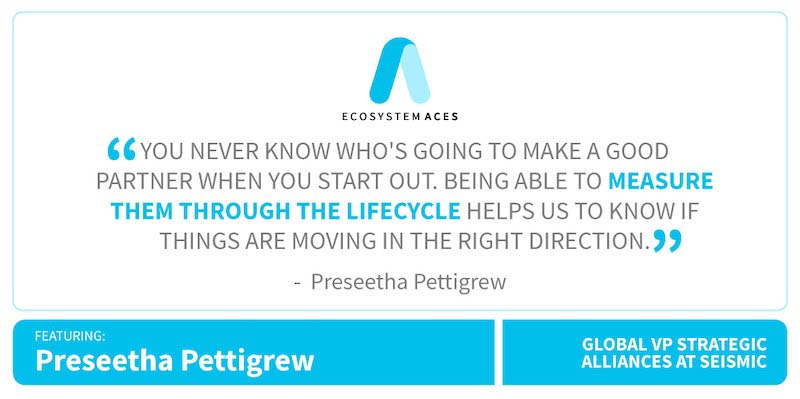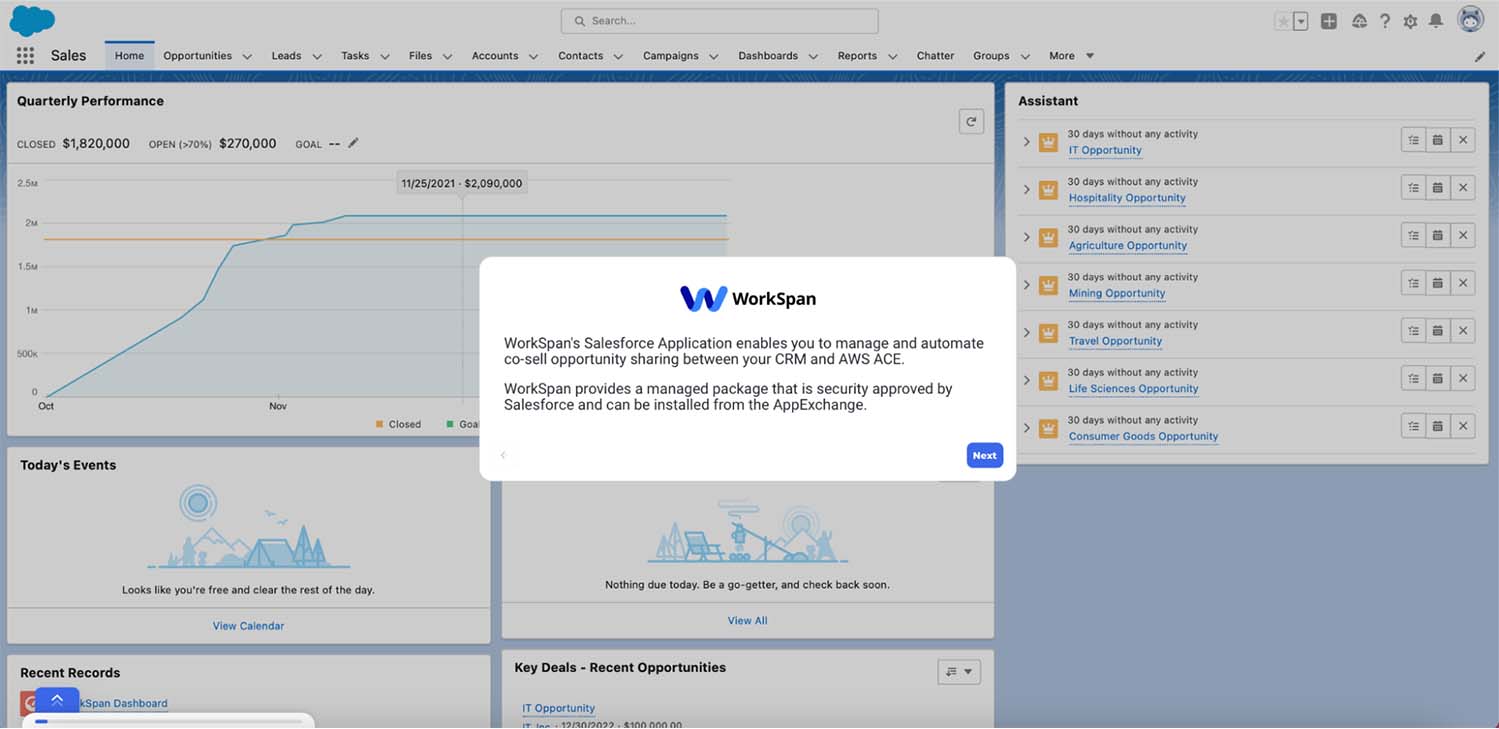In the ever-evolving landscape of modern business, partnerships have emerged as a formidable driving force behind growth, innovation, and market expansion. One such dynamic partnership model that has garnered significant attention and success is co-selling. In essence, co-selling is a strategic collaboration between two or more companies to jointly sell their products or services, leveraging each other's strengths, customer bases, and market reach. What sets co-selling apart is its remarkable potential not only to bolster revenue streams but also to unlock new levels of profitability and market dominance.
At its core, the profitability of co-selling is driven by its ability to maximize resource efficiency and expand market presence. Traditional sales models often demand extensive investment in sales and marketing efforts, making it a resource-intensive endeavor. Co-selling alleviates this strain by sharing the load, allowing partners to tap into each other's existing customer bases and networks. This not only reduces acquisition costs but also enhances the efficiency of lead generation, resulting in a streamlined and cost-effective sales process.
Furthermore, co-selling enables businesses to access previously untapped markets, unlocking new avenues for revenue growth. As partners collaborate to reach new demographics and industries, they position themselves to capture market segments that might have been challenging to penetrate independently. This diversification minimizes risk and maximizes opportunities for sustained profitability.
But in order to build a successful, profitable co-sell program, you need a roadmap that shows you where to go as well as the specific metrics for measuring partner performance. Attempt to scale without understanding what an ideal co-sell program looks like and you could build something that won’t actually give you a competitive edge against competitors. Track the wrong KPIs and you’re at risk of adjusting the wrong workflows. Don’t track KPIs at all and you will quickly find yourself unable to justify the resources you need to your higher-ups.
This article has the practical information you need to avoid these pitfalls. We’re covering:
• Requirements of a strong co-sell program
• Key KPIs to track:
- Pipeline generation
- Revenue
- Sales cycle
- Customer relations
- Partnership quality
- Marketing opportunities
• How to track and analyze your co-sell KPIs
Requirements of a Strong Co-Sell Program
All good things take time and your co-sell program won’t be flawless from the very start. And while you shouldn’t expect perfection, you should have your ideal program in mind as your guiding north star.
Not sure what this looks like? Not to worry. Here are four foundational requirements of a strong co-sell program that you should strive to meet:
- Collaborative Effort. A strong co-sell program transcends one-way transactions, demanding a joint commitment from both partners. In this shared space, collaboration thrives as partners' roles evolve throughout deals, fostering a truly synergistic partnership.
- Comprehensive Measurement. Measuring a co-sell program performance isn't limited to basic metrics. While tracking partner numbers, leads, and revenue is foundational, deeper insights emerge when considering partners' contributions at different sales cycle stages. This nuanced approach requires a robust set of KPIs (more on this later).
- Adaptability and Evaluation. A successful co-sell program embraces constant evaluation. Flexibility is key and KPIs should guide changes of program strategy. It encourages reimagining and refining indicators to ensure they align with evolving goals and changing dynamics.
- Strategic Focus. Measuring a co-sell partner program goes beyond simplicity. It’s an investment in growth and success. The readiness to measure performance directly influences outcomes. A comprehensive approach to measurement empowers the program to achieve meaningful growth through strategic insights.
Key Partner Program KPIs to Track to Measure Success
Speaking of comprehensive measurement, tracking the correct KPIs is paramount for a co-sell program's success as it provides clear insights into its performance and impact. Plus, accurate partner performance measurement helps in identifying strengths and areas needing improvement, optimizing resource allocation, and aligning strategies with goals. Ultimately, tracking relevant KPIs ensures the program remains agile, adaptable, and well-positioned for sustained growth and mutually beneficial partnerships.
Here is a list of the 21 partner program KPIs that you should be tracking in order to keep your co-sell strategies competitive:
Pipeline generation
These KPIs measure how your co-sell program impacts your company’s sales pipeline.
Co-Sell Deal Pipeline
- What: The co-sell deal pipeline is a partner program KPI that tracks the number of potential deals currently in progress or awaiting closure. This metric provides insight into the program's future revenue potential and the volume of opportunities being actively pursued.
- Why: Tracking the co-sell deal pipeline is crucial because it offers a forward-looking view of potential revenue streams and helps in assessing the program's growth trajectory. Monitoring this KPI allows teams to allocate resources effectively, prioritize deals, and make informed decisions for optimizing the program's sales outcomes.
Lead Generation
- What: Lead generation is a partner performance KPI that quantifies the number of potential customers or prospects generated through joint marketing efforts within the co-sell program. This metric measures the success of collaborative marketing activities in attracting and engaging potential buyers.
- Why: Monitoring lead generation evaluates the impact of joint marketing efforts on expanding the customer base. This KPI helps the co-sell program assess the success of its marketing collaboration in attracting and engaging potential customers. By tracking lead generation, the program can adjust marketing strategies, refine targeting, and ensure a steady influx of potential buyers, ultimately contributing to sustained revenue growth and the long-term success of the partnership.
Revenue
These KPIs track the ways your partner program generates revenue for your company.
Revenue Generated
- What: Revenue generated quantifies the total income produced through co-selling activities. This metric directly measures the financial success and impact of the co-sell program in terms of the income it generates.
- Why: At the end of the day, a program’s profitability is the bottom line determining whether or not it stays or goes. This fundamental KPI directly reflects the co-sell program’s financial success and impact.
Deal Conversion Rate
- What: Deal conversion rate is a program-wide KPI that calculates the percentage of potential deals in the pipeline that successfully transition to closed deals.
- Why: This program performance metric quantifies the efficiency of the partner sales process and provides insights into the effectiveness of the co-sell program's ability to convert leads into revenue-generating transactions. Monitoring this KPI helps identify bottlenecks, refine sales strategies, and enhance overall deal closure efficiency.
Average Deal Size
- What: Average deal size is a partner program KPI that calculates the typical monetary value of deals closed through co-selling activities. This metric quantifies the revenue generated per transaction, offering insight into the program's potential for driving higher-value sales.
- Why: Measuring average deal size provides an understanding of the program's ability to secure larger sales and generate substantial revenue from each deal. This KPI enables the program to measure its success-levels in pursuing high-value opportunities, tailor strategies to attract larger clients, and optimize resource allocation for maximum profitability. By monitoring this performance metric, the co-sell program can strive for consistent growth in revenue by focusing on deals with higher financial impact.
Sales cycle
These partnership KPIs measure the ways your co-sell program can improve deal sales cycles, both in efficiency and in overall value.
Time to Close
- What: Time to close is a partner program KPI that measures the average duration it takes to finalize a deal from the initial engagement to its closure in co-selling activities. This metric quantifies the efficiency of the sales process and provides insights into the program's effectiveness in swiftly converting leads into revenue-generating transactions.
- Why: Monitoring time to close offers valuable insights into the efficiency of the co-sell program's sales cycle. This KPI helps in identifying delays, optimizing processes, and shortening the time required to convert potential leads into revenue-generating customers. By tracking this performance metric, the program can enhance its competitive edge by delivering faster, more responsive sales interactions.
Deal Win Rate
- What: Deal win rate is a KPI that calculates the percentage of co-selling deals won out of the total number of deals closed. This metric quantifies the partner program's success in converting leads into successful sales transactions.
- Why: Tracking deal win rate evaluates the program's success in converting leads into revenue-generating deals, reflecting effective sales strategies and strong partnership dynamics. A high win rate signifies adept sales capabilities and consistent success. Monitoring enables improvement, refined tactics, and enhanced co-selling.
Upsell/Cross-Sell Opportunities
- What: This KPI tracks the number of chances to offer additional products or services to existing co-sell customers. This partner program performance metric identifies potential avenues for increasing revenue by capitalizing on the existing customer base and expanding the range of offerings.
- Why: Tracking upsell/cross-sell opportunities uncovers avenues for increasing revenue without acquiring new customers. By identifying upsell/cross-sell prospects, the co-sell program can drive incremental revenue growth, strengthen customer relationships, and optimize the value delivered to each customer, contributing to sustained profitability and long-term partnership success.

Watch our interview with Mike Stocker, VP of Partnerships at Rollworks, to learn how he closes 40% More Deals with Partner Influence.
Customer relations
These KPIs track how your co-sell program improves customer relations, from acquisition to retention.
New Customers Acquired
- What: New customers acquired is a partner KPI that measures the quantity of previously untapped customers gained through co-selling efforts. This metric reflects the program's success in expanding the customer base and attracting fresh business opportunities.
- Why: Tracking new customers acquired signifies the co-sell program's ability to access new markets and broaden its customer reach. This KPI highlights the program's growth potential and its impact on revenue diversification and expansion.
Customer Retention
- What: Customer retention is a KPI that evaluates the percentage of customers acquired through co-selling efforts who continue to engage with and remain loyal to the partnership. This metric reflects the program's capacity to maintain strong relationships, drive customer satisfaction, and sustain long-term revenue streams.
- Why: Monitoring customer retention measures the long-term quality of leads and either reinforces or calls into question whether the program is partnering with the right co-sellers.
Customer Engagement
- What: Customer engagement measures post-sale interactions with co-sell customers, gauging ongoing relationships and satisfaction. It reflects the partnership's ability to foster loyalty and deliver ongoing value.
- Why: Monitoring customer engagement showcases the program's commitment to nurturing lasting customer relationships. Engaged customers are more likely to provide feedback, refer others, and contribute to the program's sustained success. By tracking customer engagement, the co-sell program can enhance its customer-centric approach, refine post-sale strategies, and ensure customers derive ongoing value from the partnership, leading to mutually beneficial and enduring partnerships.
Customer Satisfaction
- What: Customer satisfaction is a KPI that measures the level of contentment and positive sentiment among customers acquired through co-selling activities. This success metric gauges the overall experience and perception of customers with the partnership's products or services.
- Why: Customer satisfaction KPI gauges value delivery and alignment with customer needs, driving loyalty, referrals, and renewal. Satisfied customers boost sustained revenue growth. Tracking this metric identifies improvements, enhances relationships, and ensures ongoing partnership success.
Partner program quality
These KPIs focus on the performance of individual partners and your partner program as a whole, helping you to prioritize existing partnerships and strategize for future success.
Partner Engagement
- What: Partner enablement is a KPI that gauges the level of active participation and interaction from each partner within the co-sell program. This metric quantifies the extent to which partners collaborate, share resources, and contribute to joint sales efforts.For example, regular joint planning sessions, collaborative marketing campaigns, and active participation in partner webinars and events are all indicators of high partner engagement.
- Why: Measuring partner enablement reflects the depth of collaboration and mutual investment within the co-sell program. A high level of partner engagement fosters stronger relationships, enhances joint marketing efforts, and maximizes the program's potential for revenue growth. By tracking this metric, the program can strengthen partner alignment, optimize joint strategies, and ensure that the partnership remains vibrant and fruitful.

Listen to the full interview with Preseetha Pettigrew, Global VP Strategic Alliances at Seismic, about Better Alignment through Partner Engagement.
Partner Contribution
- What: Partner contribution is a KPI that quantifies the proportion of revenue each partner contributes within the co-sell program. This metric serves as an indicator of each partner's engagement, effectiveness, and impact on the program's financial outcomes.
- Why: This performance metric enables equitable assessment of each partner's effectiveness and aids in fostering balanced partnerships. Factors such as shifts in the market, industry, or strategy can impact the revenue contributed by partners year over year or partner by partner. Therefore, evaluating partners by revenue without this context can lead to ill-informed resource allocation. By understanding the relative revenue contribution, you can optimize the impact of your co-sell program, strengthen collaboration, and foster strong partner relationships.
Partner Referrals
- What: Partner referrals is a KPI that measures the number of leads or prospects that each partner refers to the other. This metric quantifies the extent of collaboration and mutual support between partners in expanding their respective customer networks.
- Why: Tracking partner referrals signifies a symbiotic partnership that leverages mutual networks for business growth. By monitoring partner referrals, the co-sell program can foster a sense of reciprocity, capitalize on shared expertise, and collectively tap into a larger pool of potential customers, ultimately contributing to increased revenue generation and a more resilient partnership.
Partner Training and Enablement
- What: Partner training and enablement measures the effectiveness of training programs provided to partners. This KPI ensures partners are equipped to represent products or services effectively by monitoring the impact of partner onboarding, education, and enablement materials (one pagers, sales scripts, etc.).
- Why: Tracking partner training and enablement is vital as it empowers partners with skills to represent products effectively. You could be recruiting high quality partners, offer weak partner enablement, and then mistakenly switch up your recruitment strategy as your partners underperform. Plus, well-trained partners enhance customer trust, interactions, and sales success. This KPI ensures partners are equipped for optimal performance and contributes to overall co-sell program effectiveness.
Win-Win Ratio
- What: Win-win ratio is a KPI that measures the proportion of co-selling deals where both partners achieve their intended objectives. Whereas a KPI such as deal win rate shows the impact your general co-sell program has on your company’s revenue, this KPI quantifies the mutual benefit between you and your co-sell partner.
- Why: This metric is vital as it ensures that the co-sell program maintains a balanced and mutually beneficial partnership dynamic. By tracking this specific partnership metric, the program can identify areas for improvement, address any imbalances, and foster a partnership culture that thrives on shared success, ultimately enhancing the program's overall effectiveness and impact.
Competitive Analysis
- What: Competitive analysis assesses how the co-sell program performs compared to competitors in terms of market share and customer acquisition. This measurement defines strengths, weaknesses, opportunities, and threats in the competitive landscape, guiding strategic adjustments for staying ahead in the market.
- Why: Competitive analysis is essential for understanding co-sell program performance relative to competitors. By conducting market research and gathering data on the market reach of your competitors’ partner ecosystem, you can make informed decisions, maintain competitiveness, and sustain growth in a dynamic market environment.
Marketing opportunities
These KPIs measure the ways that your co-sell program impacts marketing opportunities and strategy.
Marketing Reach
- What: Marketing reach is a KPI that measures the extent and impact of joint marketing campaigns on enhancing brand visibility and awareness. This metric quantifies the success of specific marketing strategies and tactics to the target audience and the resonance of the messaging within co-selling activities.
- Why: By tracking marketing reach, the co-sell program can gauge the success of collaborative marketing efforts, refine strategies based on audience engagement, and ultimately drive lead generation and revenue growth through enhanced brand recognition and market presence.
Geographic Reach
- What: Geographic reach is a KPI that evaluates the expansion of the customer base into new regions through co-selling efforts. While marketing reach focuses on the success and resonance of marketing tactics, this metric focuses more on reach, specifically on the geographic diversity covered by existing partners.
- Why: Evaluating geographic reach showcases the co-sell program's capacity to penetrate previously untapped markets. By tracking geographic reach, the program can identify growth opportunities in new regions, expand its customer base, and diversify revenue sources.
Co-Marketing ROI
- What: Co-marketing ROI is a KPI that assesses the return on investment generated from joint marketing campaigns within the co-sell program. This metric quantifies the efficiency and effectiveness of marketing collaborations in terms of the revenue generated relative to the resources invested.
- Why: Monitoring co-marketing ROI is essential as it directly measures the effectiveness of joint marketing efforts in generating revenue and delivering value. By tracking co-marketing ROI, the program can ensure that marketing collaborations are contributing to revenue growth, justify investments, and make informed decisions to enhance the impact of joint marketing activities on the overall success of the partnership.
Want to further strengthen your program’s marketing performance? Read Collaborate for Success: Building a Co-Marketing Partnership Plan to Maximize ROI.
How to Track and Analyze Your Co-Sell KPIs
Luckily, there are tools purpose-built to help you not only track but also capitalize on the insights derived from your partnership program KPIs. By harnessing these insights, you can refine and optimize your co-sell tactics for even greater success.
A unified analytics platform becomes your co-pilot in this journey, offering not just an overview but a detailed analysis of diverse KPIs. From revenue generated to customer engagement, automated reporting within the platform provides real-time insights, enabling you to grasp the pulse of your co-sell program at any moment. Customizable dashboards further empower you to zero in on the metrics that matter most, providing a clear picture of your program's health and growth trajectory.
Take the WorkSpan co-sell management platform, for instance. Beyond simplifying KPI tracking, this innovative solution becomes a strategic ally in refining your tactics. Through automated reporting, CRM integration, and dashboards, it doesn't just display numbers; it highlights actionable trends and patterns.


Whether it's identifying stages with the highest deal conversion rates or pinpointing regions where partner referrals excel, these insights offer a roadmap for fine-tuning your co-sell strategies. This way, you're not just tracking KPIs for the sake of it; you're leveraging them to steer your co-sell program towards ever-increasing efficiency and success.
For example, check out how these companies leveraged insights from their co-sell management platforms to drive business growth:
How ActionIQ Drives AWS Co-Sell Growth with WorkSpan
The case study highlights how ActionIQ, a company specializing in customer data platforms, has strategically partnered with Amazon Web Services (AWS) for co-selling growth. ActionIQ faced challenges in their co-sell partnership with AWS, including time-consuming manual data entry processes, difficulties in keeping pipeline data updated, and data errors that hindered joint selling efforts.
To address these challenges, ActionIQ deployed WorkSpan's Co-Sell Management Platform, integrating with AWS ACE and their Salesforce CRM. This platform streamlined co-sell opportunity sharing, allowing ActionIQ to manage opportunities from within their CRM and sync data with AWS ACE in real-time.
As a result, ActionIQ achieved a 90% reduction in manual administrative tasks, shared 10-25% more opportunities with AWS, and gained real-time insights into their co-sell partnership's performance. The streamlined processes and insights from WorkSpan's platform empowered ActionIQ to drive scalable growth and enhance their partnership with AWS, improving efficiency and boosting revenue potential.
Mindtickle Uses WorkSpan to Turbocharge their Co-sell Business with AWS
The case study illustrates how Mindtickle, a Sales Readiness Platform, harnessed WorkSpan's Co-Sell Management Platform to enhance their co-sell business with Amazon Web Services (AWS). Mindtickle faced challenges in their co-sell partnership with AWS, including time-consuming manual data entry processes, pipeline data updates, and bulk uploading difficulties.
To overcome these challenges and drive scalable growth, Mindtickle deployed WorkSpan's platform, integrating with AWS ACE and their Salesforce CRM. This platform streamlined co-sell opportunity sharing and provided real-time insights into co-sell performance.
Consequently, Mindtickle achieved a 50% reduction in manual administrative tasks, shared 60% more opportunities with AWS, and gained improved co-sell efficiency and engagement. The streamlined processes and insights from WorkSpan's platform empowered Mindtickle to enhance their partnership with AWS, increase productivity, and drive revenue growth.
—
In the dynamic realm of co-selling, success is not merely a destination but a continuous journey of refinement and growth. As we conclude this exploration into the essential KPIs for a robust co-sell program, it becomes evident that measuring, analyzing, and optimizing these metrics is the compass guiding businesses towards greater efficiency and success.
Heading
Heading 1
Heading 2
Heading 3
Heading 4
Heading 5
Heading 6
Lorem ipsum dolor sit amet, consectetur adipiscing elit, sed do eiusmod tempor incididunt ut labore et dolore magna aliqua. Ut enim ad minim veniam, quis nostrud exercitation ullamco laboris nisi ut aliquip ex ea commodo consequat. Duis aute irure dolor in reprehenderit in voluptate velit esse cillum dolore eu fugiat nulla pariatur.
Block quote
Ordered list
- Item 1
- Item 2
- Item 3
Unordered list
- Item A
- Item B
- Item C
Bold text
Emphasis
Superscript
Subscript





.png)